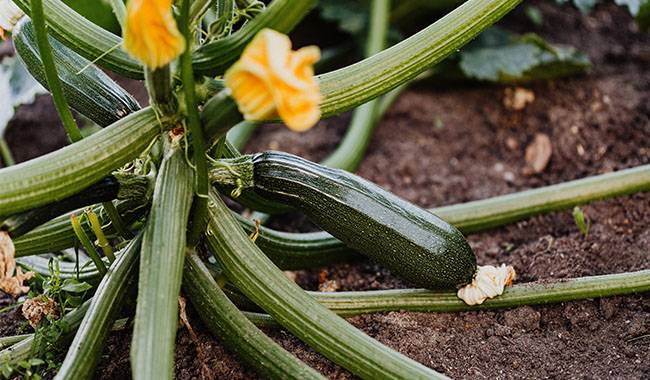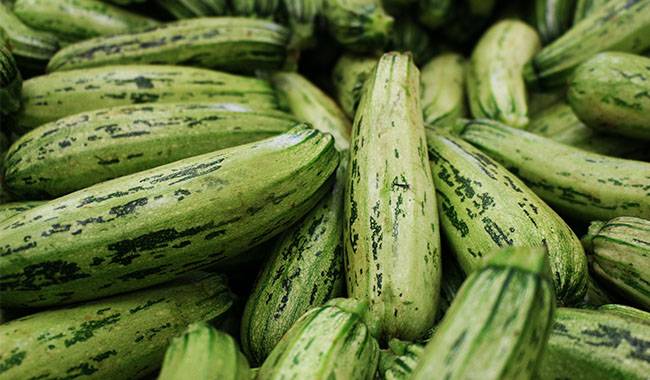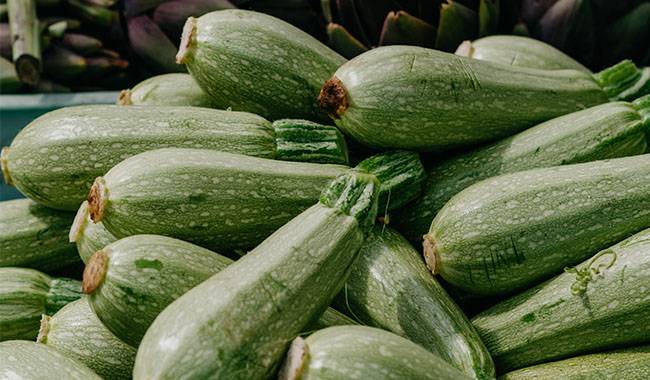
Zucchini contains vitamins A and C, potassium, calcium, iron, magnesium, and other useful substances. Its dietary fiber adsorbs toxins and lowers the level of cholesterol in the blood.
This vegetable is considered to be an irreplaceable dietary product. It is recommended as a first complementary food for infants because of its tender texture and easy digestion by the body.
At the same time, Zucchini is not that difficult to grow. However, there are some tips that can help to obtain a really rich harvest from each bush.
According to them, in order to satisfy the demand of an average family for Zucchini, there are enough plants to grow 3-4 bushes, from which 2-3 fruits are obtained every day during the season. Zucchini is unpretentious, grows well and very quickly, with a large crop until October.
Select seeds with a high yield
Even at the seed selection stage, it is important to take into account the bumper crop. Select varieties and hybrids that have been proven to produce the best yields.
Typically, hybrids have higher yields, are more resistant to disease, and come into fruit earlier.
Growing Zucchini by germination
The method of germination for growing Zucchini helps to obtain the first harvest earlier. This is especially true in areas with mild climates or in years with cool, lingering springs. Of course, the germination method also increases the size of the total crop removed from individual bushes.
Zucchini seeds are more likely to germinate if they are soaked for an hour in a small amount of water.
To plant Zucchini seedlings, it is best to take a large container, because this vegetable first forms a root system and then grows green masses.
About 25-30 days after the first shoots appear, the pumpkin seedlings are ready to be planted in the ground. There is no need to feed the seedlings, you only need to monitor the moisture level of the soil.
When Zucchini shoots are planted in the open ground, the temperature should be about 75-78°F (24-26°C) during the day and not less than 57-59°F (14-15°C) at night.
Growing Zucchini correctly
Zucchini prefer organic matter, so to obtain a large crop they are planted in warm compost beds or in warm holes. When planted on compost (because of the fermentation inside), the soil feels like it is warming up.
In this case, the Zucchini will grow even if the snow around them has not yet melted. In this case, they need to be protected by a double shelter with a distance of 12inch (30 cm) between the shelters (to create an insulating effect).
The warming hole is done as follows: dig a hole with 2 stingers of a shovel and fill it with weeds. Ideally – fresh nettles and hay together. All this is covered with soil from above, in which Zucchini shoots are planted. A few days before planting the seedlings, undiluted fermented grass is injected into the well.
Between the Zucchini bushes, a thin layer of hay or weeds is laid on the ground. This preserves moisture and prevents weeds.
Plant seedlings at least 30inch (80cm) apart to give each bush enough feeding area and to make harvesting easy.

Shaping Zucchini shrubs is a must
Shrubs for planting pumpkins should be shaped in dry and sunny weather, which allows the plugs to dry quickly and prevents infection. The cuts are best covered with ash or activated charcoal.
What to prune?
All leaves lying on the ground are removed (this reduces diseases and infections). The roots of the leaves – do not cut them off! Be cut. It nourishes the ovaries.
Not every Zucchini flower bears fruit, because there are male and female flowers. The female flowers have a thickening at the fruit, while the male flowers do not have this thickening.
The first male flowers are almost completely removed so as not to wither the bush. Later, however, not all male inflorescences should be removed. Male flowers are necessary for pollinating female flowers.
When growing self-pollinated hybrids, the male flowers are not needed and can be removed completely.
In addition, when shaping Zucchini bushes, partially cut off the largest leaves, leaving only their stems. This is to ensure that they do not obscure the ovaries and that there is good ventilation within the bush. Removing the largest leaves from a Zucchini bush is a good way to prevent juvenile ovary rot.
Fertilize Zucchini three times per season
Zucchini needs top dressing to obtain really big yields. zucchini should be fertilized at least three times during the season.
- On the 10th day after sowing, make a nitrogen fertilizer application. It can be a herbal infusion, diluted with water at a ratio of 1:10.
- When Zucchini starts flowering, the same nitrogen fertilization is done again.
The herbal infusion is made as follows. Fill a container with grass (it is better to put dandelion, burdock, nettle stems, shepherd’s purse, plantain leaves there), pour in water, and cover it with a lid.
After 7-10 days, when the greens are fermented, dilute the infusion at a rate of 1 liter per 10 liters of water, stir and pour it into each Zucchini bush.
- Potassium fertilizer works well at the stage of starting to bear fruit. 2 liters of wood or grass ash are poured into a bucket of water and left for a day. You can simply sprinkle the ash under the bush before watering.
All fertilization is done in dry, cloudy weather so that there is no burn on the leaves.
Fertilize on dry, cloudy days so that the leaves don’t get burnt.
Apply additional boron fertilizer to Zucchini (if germination is poor or the fruit is rotting). Add 5 grams of borax, 40 drops of iodine, and 1-2 cups of whey (can reach 1 liter) to a bucket of water. Whey is a lactic acid bacterium that does not allow the development of fungi, which is very beneficial for the immunity of the plant. Iodine is a good preservative.
Watering Zucchini when needed
When watering, make sure that the underbrush is moist. However, do not overdo it and let the top layer of soil dry out a little between waterings. Water Zucchini no more than once or twice a week, depending on the weather conditions.
Important: Do not water your Zucchini a week and a half before the big harvest. Otherwise, they will not store well and will rot.
Harvesting – the tricky part
The first 2-3 young Zucchini fruits should be cut when they reach 5-6inch (12-15 cm) in length; this will encourage the plant to continue fruiting.
Do not leave the Zucchini in the bush at the mature stage (when it reaches its maximum size and starts to turn yellow). The bush will waste all its energy on seed formation, which will lead to a further sharp drop in production.
It will get the message that its reproductive task has been completed and you will get one or two Zucchini a week instead of two a day. Also, the fruiting period will be shortened from 4-5 months to a month and a half.
This means that Zucchini should be picked at a young age – no more than 8inch (20cm) in length, which will not only increase the yield but also give you more delicious fruit.
The fruit should be cut with a sharp knife and not broken open to avoid damaging the plant.
If there are problems
Here are a few of the most common problems that occur when growing Zucchini, their causes, and solutions.
Plants lose their fruit before they start growing
Zucchini is a real summer vegetable. If the weather is quite cold and rainy, the plant starts to lose small fruits more frequently.
In addition, the reason may be that the female flowers are not fertilized. This fertilization is usually done by bees and bumblebees, but unfortunately, their numbers are getting smaller and smaller.
You can help your Zucchini by performing hand pollination. picking male flowers and sweeping them along the pistils of female flowers, carrying pollen in this way.
With too many barren flowers, the fruit does not set well, or the ovary rots.
This is caused by a lack of micronutrients. If your Zucchini are grown on compost, they have enough nitrogen and a small number of micronutrients. The boron fertilizer mentioned above quickly solves this problem.
Powdery mildew
Fighting powdery mildew on Zucchini will help with the following solution: 40 drops of green or iodine, or 5 tablets of “Metronidazole” per 10 liters of water. Apply it generously to the leaves of the plant with a watering can.
Have a good crop!




